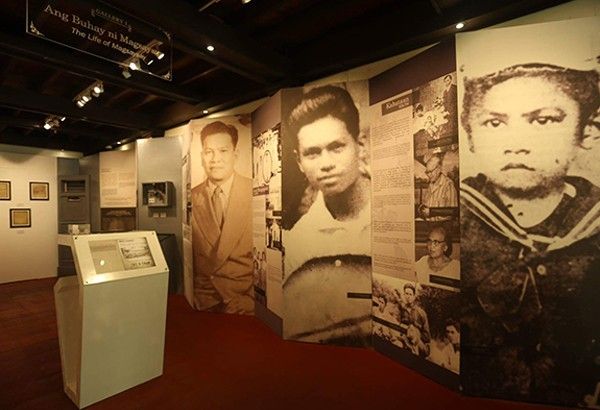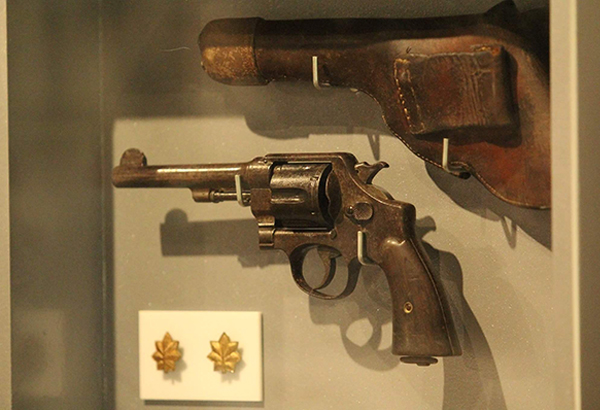Museum of Magsaysay recalls a people’s champion

In the volatile wave of recent events, issues surrounding presidents have been rousing an uproar in the media, and past issues, then thought to be fixed as fact, have lately been up for re-interpretation — launching casual violent rhetoric across social media platforms, triggering rallies almost as though it were 1986.
In the current context, the image of yet another late president has resurfaced in Zambales, where an old transistor radio, in an old Castillejos house, hums the wistful, nearly whimsical jingle that once commanded popular devotion: “Mambo, mambo Magsaysay, our democracy will die, kung wala si Magsaysay!” Part nostalgic, part vaguely mythological, it’s almost like hearing that once there was a Camelot.
“Tayo po ngayon ay nasa yugto ng ating kasaysayan kung saan maraming Pilipino ang nagtatanong kung ano ba talaga ang dapat na katangian at ginagawa ng isang huwarang pangulo (We are in a time where many Filipinos call into question the characteristics and the deeds of a true president),” says the National Historical Commission of Philippines (NHCP) acting chair and commissioner Rene Escalante, in his speech preceding the launch of the Museo ni Ramon Magsaysay.

The museum preserves the revolver used by Magsaysay as a guerrilla while surrounding panels relay information on his rise from soldier to commander.
The restored house — NHCP’s latest museum project that took five years in the making —recently welcomed its first audience. The Commission on Higher Education (CHED)’s new general education curriculum, urging the promotion of museums, seems to promise further foot traffic. On its opening, the museum admitted the crowd into three galleries portraying the late president’s rise to power, his life at home, and his demise.
“It’s fitting that we (establish) the museum within his house. It isn’t only about historicity, but about ancestral historicity,” says NHCP researcher Stephen Macaraeg, underscoring the relevance of the old house where the champion of the people had once lived. Zambales had not only set the stage for his early life’s most riveting events; rather, the place had figured grandly into them: from the time he rose from chauffeur to guerilla soldier, to the time when he urged the recognition of more than 10,000 Zambaleno fighters.
All of these are detailed here: in text-heavy panels, in the more interactive analog displays of puzzles, sliding frames, and revolving tables, or in the added attraction of digital screens. “Students are more visual now,” says Escalante. “Watching documentary films and visiting museums have been two of their favorite means of learning history.” Albeit simple, technology here does well not to disrupt the authenticity of the place, alienating none of the students viewing the artifacts and enjoying the humble wizardry of talking portraits.
In the domain of museums where memory slowly hardens into myth, the restored Magsaysay residence strongly reinforces the image of a president one with his people. Guerilla documents hung on walls recall Magsaysay fighting to give due tribute to fallen Zambaleno soldiers. Interactive panels depict the then unorthodox means with which he quelled insurgencies, by giving land to the communists who surrendered. A preserved barong tagalog and a recreated interactive presidential office conjure recollections of campaigns in kalesas, of an elected leader taking his oath for the first time in the national ensemble, of the ardor of a hero who wasn’t a god. Even his death depicted through photographs recalls his decree to welcome the masses into the Palace. In popular fantasy, his was a hero image sculpted with the face of a common man.
In the middle of the homage, the museum’s persuasive portrayal of a valued president, it’s seductive to think, what if his way of leading had lived on? Political figures may have attracted the same fierce reverence as Magsaysay’s followers, yet none of course has assumed the same character. “Succeeding presidents,” muses Macaraeg, “(are hardly concerned with) continuing the legacy of their predecessors, but rather want to build a legacy of their own.”
In the course of history, legacies are never fixed; rather, they are drafts eternally open to interpretation, likely rewritten across time, across media, and across political administrations, sometimes distorted, sometimes forgotten. History is as much remembering as it is reinventing. Although things stay constant like artifacts and jingles wafting through transistor radios, the museum of Magsaysay in Zambales recalls that people are ever made and remade by the places where they have lived, at times where they are buried, or, in this case, where they are remembered.
* * *
The author is the winner of the 2016 Ateneo Art Awards-Purita Kalaw-Ledesma Prize for Art Criticism.



















